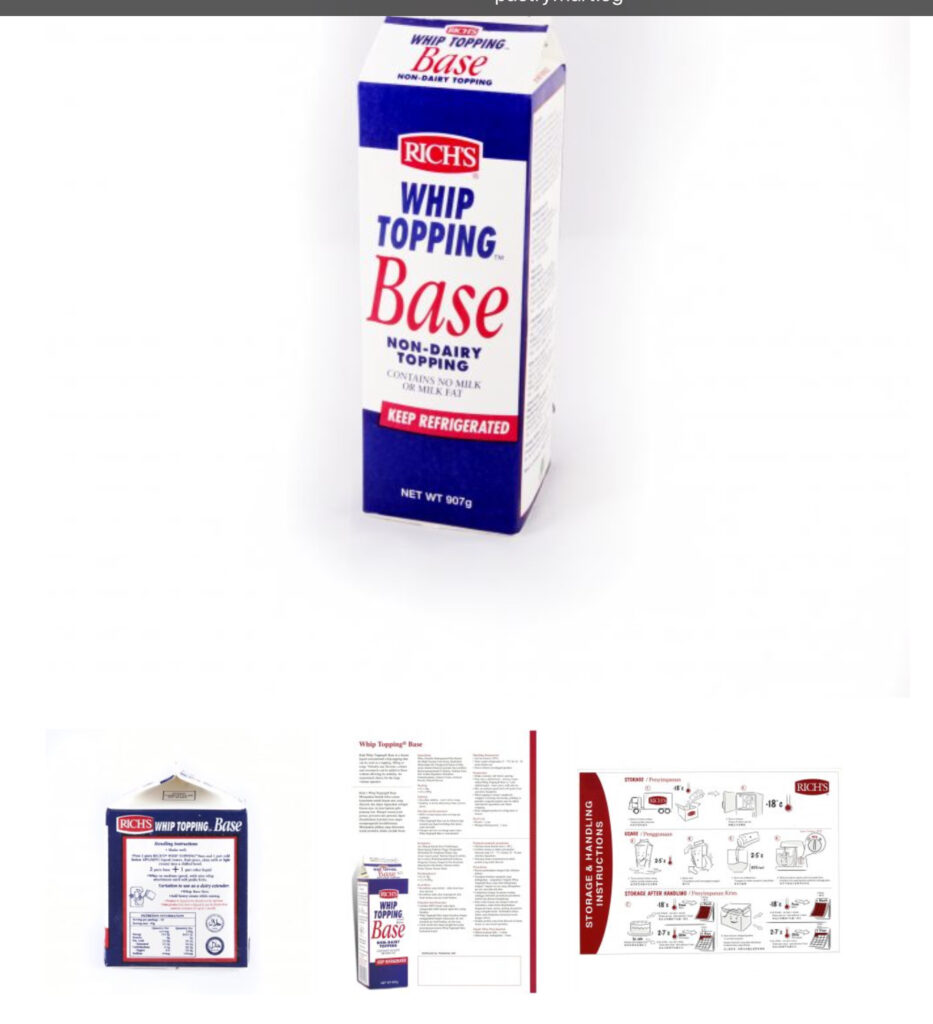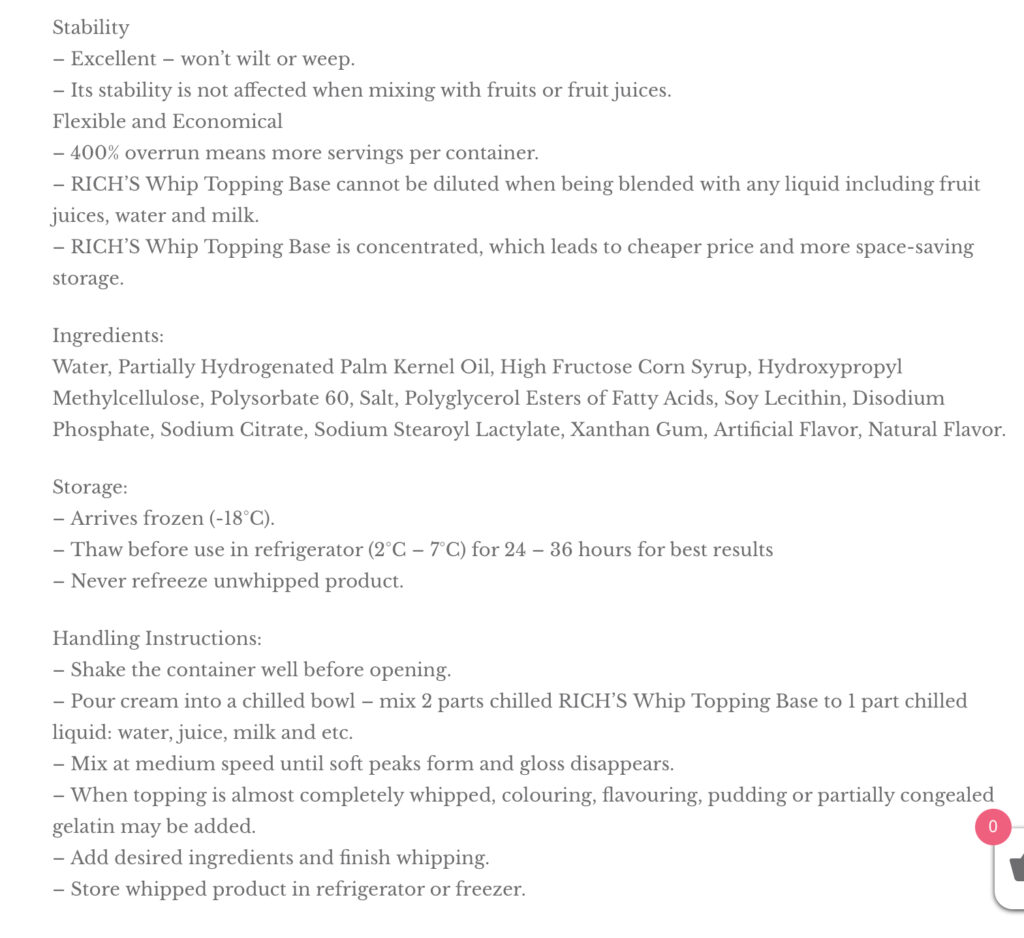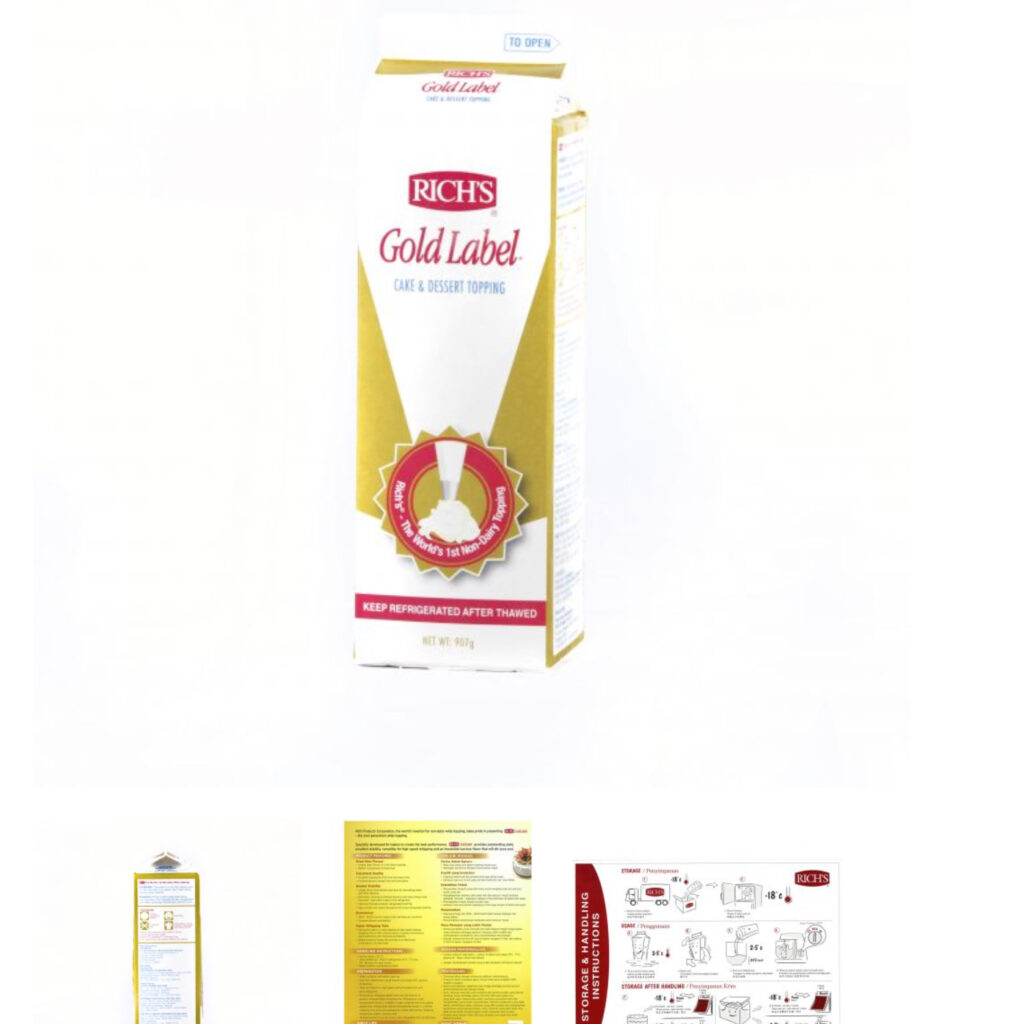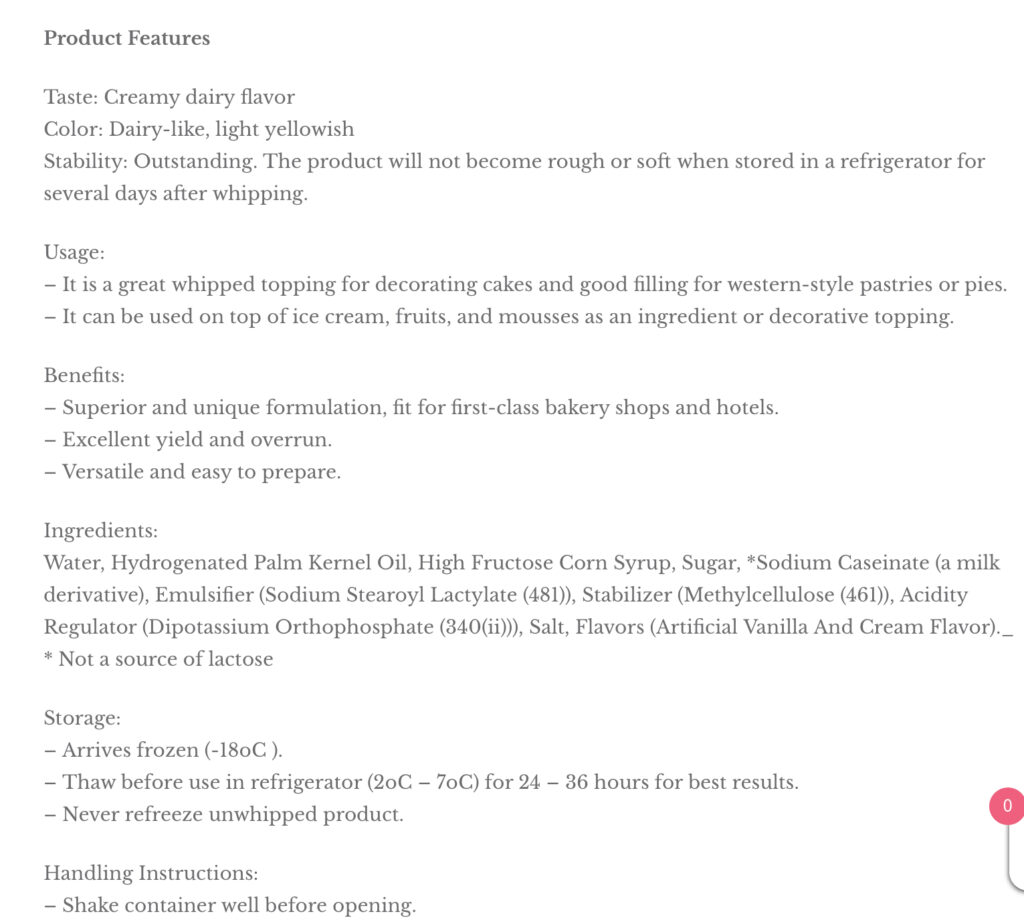Non-dairy toppings, What are they?
Non-dairy toppings primarily consist of chemicals, including partially hydrogenated palm kernel oil, high fructose corn syrup, hydroxypropyl methylcellulose, polysorbate 60, salt, polyglycerol esters of fatty acids, soy lecithin, disodium phosphates, sodium citrates, sodium stearoyl lactylate, xantham gum, artificial flavours, etc.
Phew! The only words I understood here were soy and salt!
When and Why were they invented?
Necessity, they say, is the mother of invention and WWII takes the credit for food shortages that led to alternate approaches. Most dairy products were being sent overseas for the war effort causing milk shortages in the US, resulting in a young dairy farmer creating a process for replacing milk cream with vegetable oil in the production of dessert toppings.
Made with corn syrup, sugar and isolated soybean protein, the soybean “cream,” introduced in 1945, lasted longer in the refrigerator than dairy-based whipped cream and could remain frozen for more than a year without degrading. It also cost less than the dairy-based version.
While this was an apt answer for the time, the industry players continued to promote the product because it was profitable and beneficial – to them!




Ironically, most non-dairy toppings are not even entirely dairy free!
Many brands include dairy ingredients and are thus not suitable for vegan diets or others who avoid dairy either because of a dairy allergy or due to religious reasons.
What would YOU choose? Dairy cream or non-dairy?
Radhika

Dairy cream each time. The non-dairy version sounds awful. If I don’t recognise the ingredients, I’m not interested in eating it. Interesting article, many thanks. Angela x